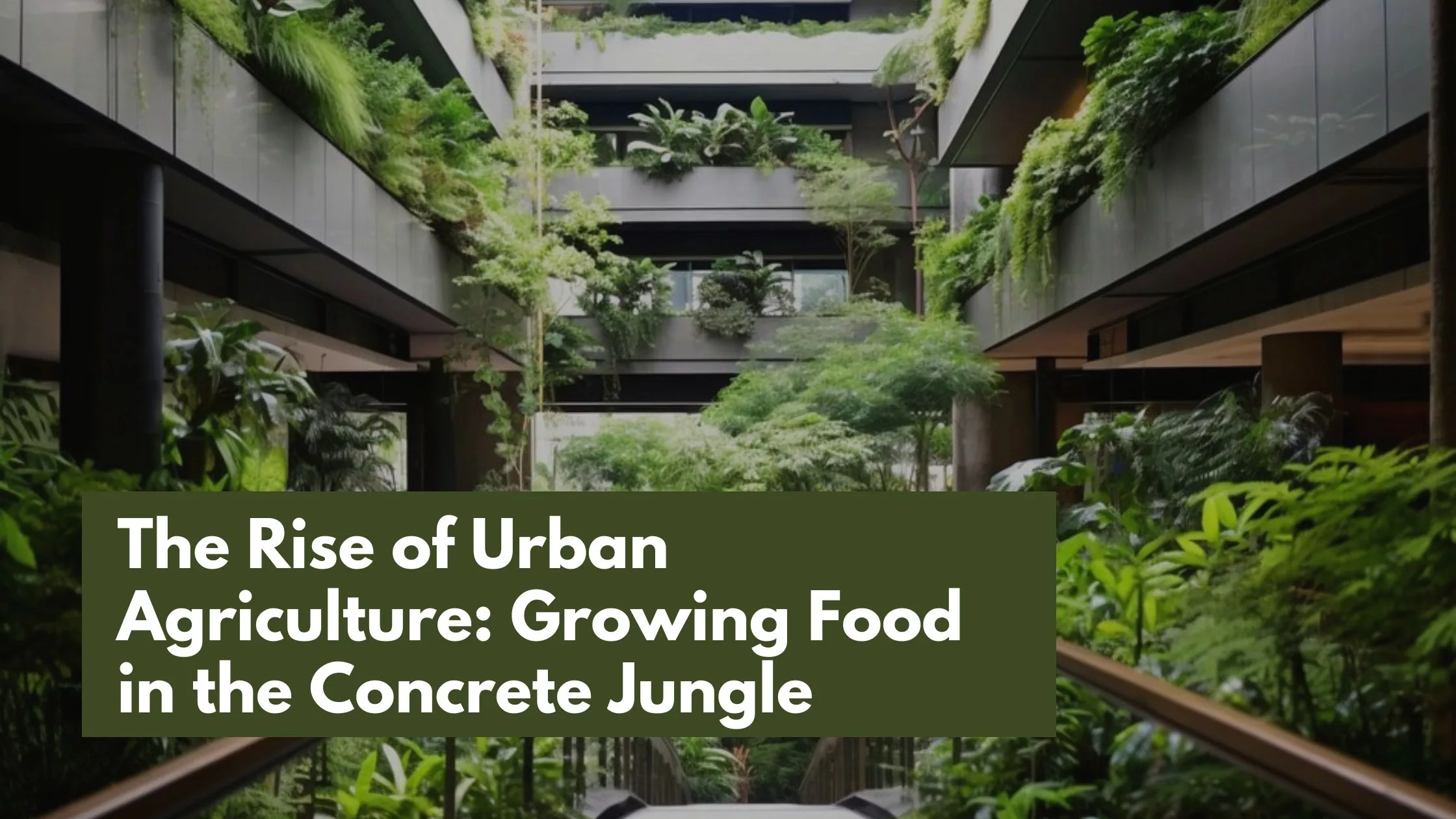Introduction
Urban agriculture, or producing food in urban environments, has grown substantially in popularity in recent years. Given the importance of sustainable agriculture, It provides a sustainable response to the growing need for fresh, locally sourced food as cities become more populated. Urban agriculture is converting concrete jungles into vibrant green places with the help of cutting-edge methods and a mentality shift while offering advantages to people, communities, and the environment. In this blog, we’ll examine the rise of urban agriculture and the causes of its rising acceptance.
The Need for Urban Agriculture
People and their food sources are no longer connected due to the rapid rise of urban populations. Long-distance transportation is a critical component of conventional agricultural systems, which increases greenhouse gas emissions, nutrient loss, and reliance on fossil fuels. In addition, food deserts, which have little or no access to fresh produce, are a common problem in metropolitan areas.
By bringing food production closer to customers, urban agriculture tackles these issues. Urban farmers may cultivate fresh, wholesome food inside the city limits using accessible urban sites like rooftops, empty lots, and community gardens. Localizing food production lowers transportation expenses and emissions while enhancing access to more wholesome foods.
Types of Urban Agriculture
Urban agriculture covers various activities, from vertical farming to communal gardens. Let’s look at a few of the most typical types:
Rooftop Gardens:
Crops are grown in these spaces, frequently underutilized on top of buildings. They produce fresh food while providing insulation, lowering energy use, and reducing the urban heat island effect.
Community Gardens:
These are common areas where locals grow fruits, vegetables, and herbs together. These gardens encourage interpersonal communication, cultivate a feeling of community, and offer a supply of fresh vegetables.
Vertical farming:
This technique includes growing crops in layers piled vertically, usually inside. Vertical farms may generate high yields in constrained locations using hydroponics, aeroponics, or other soil-less growth techniques.
Aquaponics:
An aquaponics system combines hydroponics, or growing plants without soil, with aquaculture, which is the practice of rearing fish. A symbiotic connection is created when the fish excrement is transformed into plant nutrients.
Benefits of Urban Agriculture
Numerous advantages arise from the growth of urban agriculture for people, communities, and the environment. Let’s examine a few of these benefits:
Food security:
Gardening improves food security by lowering reliance on outside food sources. Using locally farmed crops, cities may become more self-sufficient and resistant to interruptions in the global food supply chain.
Environmental Sustainability:
Urban agriculture reduces the adverse effects of conventional agriculture on the environment. Urban farming dramatically cuts carbon emissions and aids in preserving natural resources by lowering food miles and requiring synthetic fertilizers and pesticides.
Better Nutrition:
Fresh, nutrient-dense vegetables are sometimes tricky to find in metropolitan settings. Urban agriculture expands the range of nutritious food choices, encouraging better nutrition and addressing diet-related diseases like obesity and diabetes.
Economic opportunities:
Urban agriculture generates economic prospects, particularly for nearby farmers and business owners. People may create employment, make money, and support the local economy by starting urban farms.
Green Space & Biodiversity:
It converts concrete landscapes into green areas, enhancing urban surroundings’ general aesthetics and standards. e) Green Space and Biodiversity Additionally, these natural places attract advantageous animals and birds by encouraging biodiversity.
Overcoming challenges
Urban agriculture has many advantages, but several issues must be resolved if it is to continue expanding:
Land Availability:
Given the tremendous demand for urban areas, finding adequate land for urban agriculture can take time and effort. Land usage efficiency is increased via creative approaches like vertical farming and rooftop gardening.
Soil Contamination:
Urban soils are frequently polluted, which poses threats to the health of crops and the safety of food. Soil cleanup procedures, as do raised beds or soilless cultivation techniques, lessen these difficulties.
Policy and Regulation:
A lack of favorable laws and regulations may hamper the growth of urban farming. Governments must pass laws that support and encourage urban agricultural efforts, including zoning laws and access to utilities and water.
Education and Awareness:
For urban agriculture to be widely adopted, educating communities about its advantages and practices is essential. People may embrace urban farming by raising awareness through seminars, training programs, and educational initiatives.
Success Stories and Future Prospects
The promise of urban agriculture is demonstrated by several success stories from around the globe. Urban agricultural initiatives have thrived, reviving neighborhoods and altering urban environments, from “Gardens by the Bay” in Singapore to the “Brooklyn Grange” in New York City. These success tales give people ideas for new projects and show that urban farming is scalable and profitable.
Urban agriculture is positioned to continue growing as we look to the future. Technological developments, such as using robotics and artificial intelligence in farming, will boost output and resource effectiveness even further. Collaborations between urban farmers, legislators, and researchers can spur innovation and help this expanding business overcome its obstacles.
Conclusion
The growth of urban agriculture is transforming the problems of responsibly feeding a rising urban population. Urban agriculture has many advantages for people, communities, and the environment since it reconnects people with food sources and turns concrete jungles into green areas. Urban agriculture has a bright future as more cities adopt this practice, providing a robust and sustainable food source for future generations.



